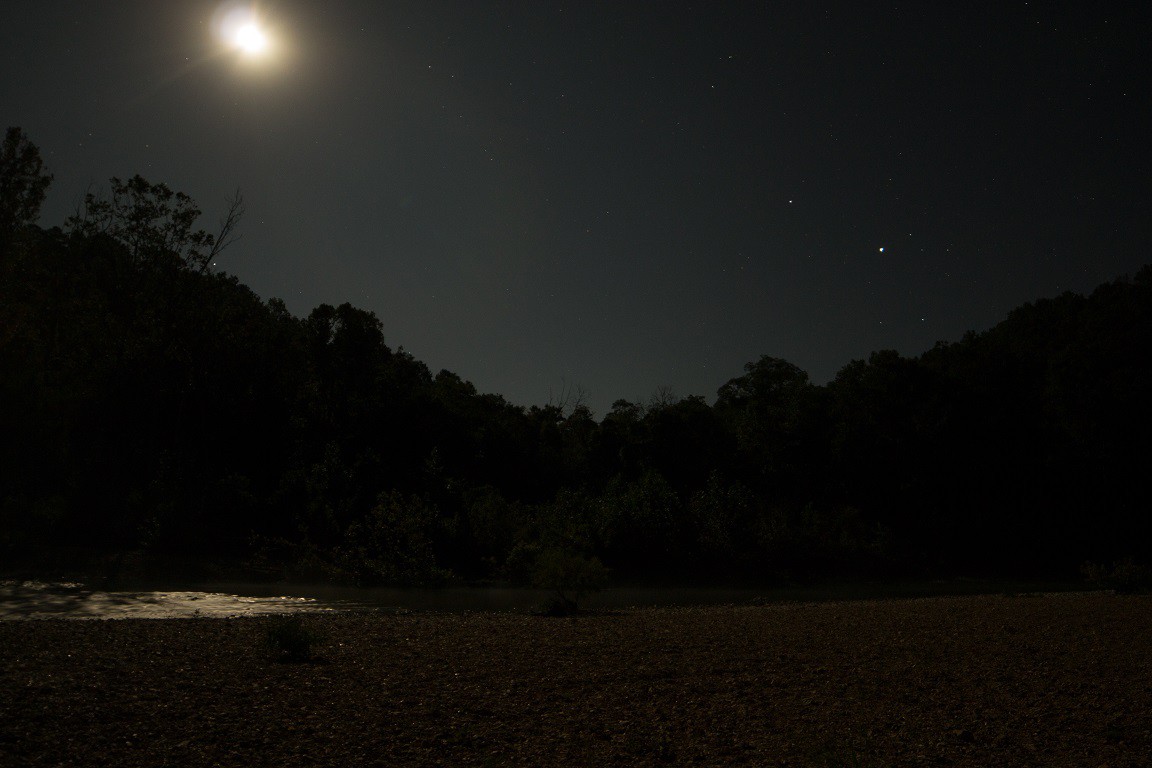It has been a quiet *checks dates* eighteen months on this project, and I apologize for not having more updates. The short story is that there are no new starfield updates on this project. 2020 has not been a great year for my family - though we are fortunate and no one has gotten sick, knock on wood - and we haven't been able to go anywhere for stargazing. We did get out camping once in late September 2020 to the Mark Twain National Forest in Missouri but it wasn't good for starfields:

Nikon D3100, Rokinon f/2.8 14mm lens, 10s @ f/2.8, ISO 280
The moon, Jupiter, and Saturn were all lovely though!
Since we're between photography sessions I have done some maintenance work on the housing and mount to make sure they're still working, and I've had some thoughts on what I want to improve on the existing system.
The Camera Attachment
The camera attachment ball head that the project is using works okay but it has two main issues. First, it's difficult to screw the camera body to the ball head while the camera aimer is on the tripod. Doing it in the dark and with a large lens on the camera makes it even harder, and I am constantly feeling like I'm going to drop the camera while getting it attached. Second, once the camera is attached, it has a fairly small range of freedom. The barrel of the camera aimer must be pointed straight north to cancel out the sidereal rotation so in order to take pictures of anything except Ursa Minor the camera has to be pointed independently without moving the aimer. The specific ball head that I'm using simply doesn't have a lot of ability to freely point the camera without loosening the mounting screw. I don't know what to do about this but I've been keeping an eye out for a better solution.
The Gearing Arrangement
Portability is important to me when I go camping and hiking, and the existing gear arrangement is neither light nor small. In some ways that's just kind of how it goes with a 10000 : 1 reduction - it's hard to accomplish that kind of ratio without a lot of gears - but I think I can do better.
- I plan to experiment with M3 or M2.5 sized hardware in the planetary gear trains to reduce the weight of the 24 M4 bolts. They function as axles which transfer the rotation from the planet gears to the carrier so I can't go too small but I can probably go smaller than 4mm.
- In addition to reducing the diameter of the hardware I plan to transition away from bolts entirely and go with pins. The gear sets are already tightly sandwiched so there is no real need for the bolt heads to keep the planet carrier in place.
- Each of the gear sets is 10mm thick for a total of 60mm (plus the retainer layers adding a bit more). It was sized that way because the bolt heads needed to be buried in the planetary carrier which made the carrier 5mm deep, and I just made the gears 5mm deep too. That is just overkill and I would like to reduce the height of the gears and carriers since I'm going to do away with the bolts that drove the requirement.
Is it foolish to make Mk2 when I haven't proved out Mk1? Mmmm...nope!
 Chris
Chris
Discussions
Become a Hackaday.io Member
Create an account to leave a comment. Already have an account? Log In.